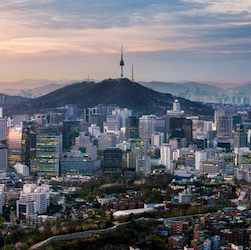- Compare a wide range of suppliers
- Quick, easy form to compare quotes
- Switch with minimal effort
For a nation with such little year-round sun, it’s no wonder the UK isn’t topping the tables for photovoltaic (PV) solar power use. But with many countries having shown a commitment to generating more environmentally-friendly energy in recent years, who is leading the field and who is lagging behind? Find out in our list of the top-ranking countries below. And for the latest prices and tariffs, see our energy comparison page.
Top 10 countries going solar

1. China
China has a bigger solar energy capacity than any other country in the world, at a gargantuan 130 gigawatts. It also still holds the record for largest operational solar project in its 1,547-MW project at Tengger, recorded in 2018. These feats are made easier by the fact that China is the world’s largest manufacturer of solar panels, which has seen it already exceed the government’s 2020 target for solar installations, offsetting a significant carbon footprint.

2. United States
Home to some of the world’s largest solar power plants, the United States is the second-largest growth market for renewables. Despite President Donald Trump’s decision to pull out of the Paris Agreement, renewable projects in the US are expected to benefit from multi-year federal tax incentives and state-level policies for distributed solar panels in the coming years.

3. Japan
With its advanced technology and manufacturing industries, the Japanese government pledged to increase renewable energy sources from 15% to 22–24% in 2018, including wind and solar by 2030. Since the Fukushima Daiichi nuclear disaster, the country has approached solar power with vigour, setting targets for 28 GW and 53 GW for 2020 and 2030, respectively.

4. Germany
Germany has been a key leader in the production of PV power for years, achieving the highest ranking country for solar PV per capita in 2018. Renewable energy is considered a high priority by the government, which aims to source 80% of electricity from renewable sources by 2050. In the first half of 2018, solar power produced over 7% of the country’s net power consumption, out of a total renewables share of 39%.

5. India
A country with one of the fastest-growing solar industries, India’s solar installed capacity reached 28.18 GW in March 2019 and the country became the lowest cost producer of solar power in the world. The government had an initial target of 20 GW capacity for 2022, which was achieved four years ahead of schedule in 2018.

6. Italy
Although Italy has historically relied on foreign imports for a significant proportion of its energy, as of 2018, solar PV accounts for 7.9% of electricity demand, making the country a major leader in solar power generation and development. After the EU set a target to generate 20% of energy from renewable sources by 2020, Italy was one of eleven nations to reach the objective years in advance of the deadline.
7. United Kingdom
Government initiatives encouraging schools, businesses and homes to introduce solar panels, alongside a decrease in the cost of PV technology, have helped the UK establish itself as a leading country in solar power production. In 2017, solar accounted for 3.4% of Britain’s total electricity generation, up from 3.1% in 2016. The government also expects that 4 million homes will be solar-powered by 2020.

8. Australia
PV accounted for 5.2% of Australia’s electrical energy production in 2018, and as of March 2019, the country had over 12,035 MW of installed PV solar power, of which 4,068 MW were installed in the preceding 12 months. 59 solar PV projects with a combined installed capacity of 2,881 MW are also either under construction, constructed or due to start construction having reached financial closure. But many would argue that Australia is still a producing relatively little of its energy through solar power, while it has the sunshine, resources and infrastructure to do more.

9. France
The French solar market grew by 59% in the first six months of 2018, mainly driven by large-scale solar installations. Overall, the country’s cumulative installed PV power surpassed an impressive 8.5 GW, with the newly installed PV capacity reaching 479 MW. With its political spirit, developed energy industry and thriving economy, France is steadily growing as a generator of this form of environmentally-friendly energy.

10. South Korea
South Korea plans to add 30 GW of PV by 2030, to improve the country’s relatively poor renewable energy performance up until now, with 9% of that capacity to be developed in Saemangeum and 14GW of solar power energy to be installed before 2020.
More guides on Finder
-
5 ways to save on energy bills this winter
With so many of us looking to cut costs this winter, here are some ways to save on gas and electricity while still staying safe and warm.
-
The Warm Home Discount Scheme explained
Find out who gets the Warm Home Discount automatically, who needs to apply and how to do it. Plus more tips for saving on your energy bills.
-
Methodology for energy ratings
The energy experts at Finder compare suppliers and rank them on several areas of customer service performance to give you an informed view.
-
Solar panel statistics: How many are needed to power the world?
The UK would need around 980km² to satisfy its electricity needs, roughly 0.41% the total land area.
-
E.ON Next vs EDF Energy
Choosing between E.ON Next and EDF Energy? Compare these 2 major energy suppliers on factors like available tariffs, Finder score, price and service.
-
British Gas vs ScottishPower
Read our full comparison of two of the UK’s biggest energy providers, including prices, tariffs, exit fees, green credentials and customer satisfaction information.
-
E.ON Next: Electricity, gas and dual fuel tariffs
Learn about “Big Six” supplier E.ON Next’s gas and electricity tariffs, its commitment to renewables – and what customers say.
-
British Gas energy review
Our review analyses British Gas energy deals, green credentials and service. Is it the right supplier for you? See what customers say.


